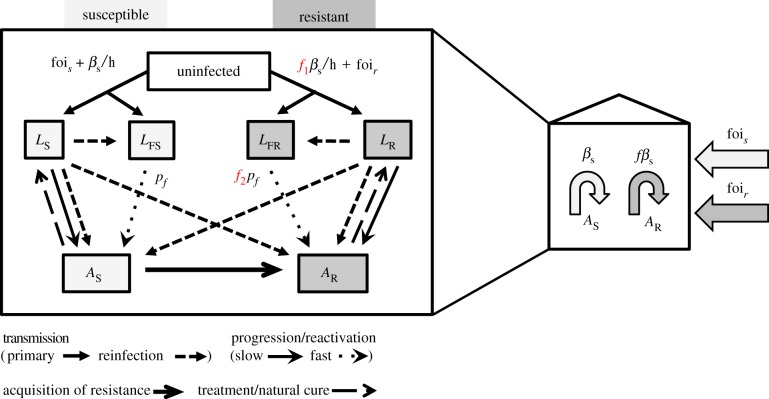Figure 1.
A standard natural history, transmission model for two strains (susceptible and resistant) of Mtb was used (diagram on the left). Uninfected people become infected at a rate dependent on the number of active cases (dynamic transmission). Once infected, the majority of people (85%) are assumed to enter a latent slow (LS/LR) state. The remainder enter a rapid progression (latent fast, LFS/LFR) state which has a higher rate of progression to active disease (AS/AR). Resistance mutations are acquired during active disease. Those with active disease recover to the latent slow state via treatment or natural cure. The fitness cost to resistance is assumed to affect the rate of transmission (f1) or the rate at which those latently infected with MDR-TB progress to active disease (f2). Only the effect on primary transmission of f1 is highlighted here, but reinfection is also affected. f1 and f2 are set at 1 or allowed to vary between 0 and 1 in the three separate models: f1 in Model 1, f2 in Model 2, and both f1 and f2 in Model 3. The four estimated parameters (shown in the diagram on the right) were rates of internal transmission (βs, f) and the external forces of infection (fois, foir). (Online version in colour.)

